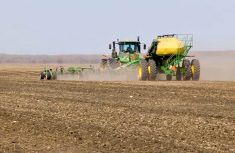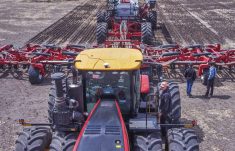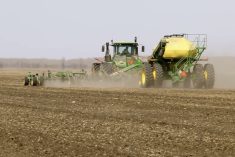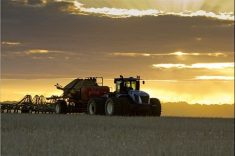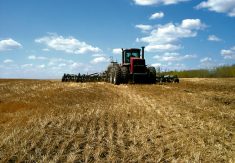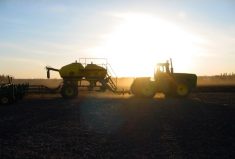Winnipeg | Reuters –– Western Canadian farmers, some of whom could not plant crops last year due to soggy soil, may be able to get a head-start on sowing their fields this spring.
Canada is the world’s biggest canola exporter and the second largest wheat exporter, but its flat western provinces — Manitoba, Saskatchewan and Alberta — are prone to floods in the spring as snow melts. Last year, 4.6 million acres went unplanted, the most in three years, due mostly to wet conditions in southwestern Manitoba and southeastern Saskatchewan.
Read Also

India slaps 30 per cent import duty on yellow peas
India has imposed a 30 per cent duty on yellow pea imports with a bill of lading date on or after Nov. 1, 2025.
This year, mild March temperatures have melted snow and raised the chances that soils will be dry enough to plant in the coming weeks. Farmers in the three Prairie provinces are likely to start seeding by mid-April, a week or two earlier than usual, crop specialists say.
“The snow is gone but we still have to wait for the soil to be warmed up a bit,” said Daphne Cruise, cropping management specialist in Moose Jaw for the government of Saskatchewan, the biggest wheat- and canola-producing province.
Saskatchewan’s Water Security Agency said March 9 that the province’s central crop belt could have above-normal spring flooding. Some of that risk has since abated due to mild weather, Cruise said.
Environment Canada warned on Monday, however, that much of Saskatchewan and Manitoba could receive a major snowfall between Tuesday and Wednesday.
Alberta government crop specialist Harry Brook, based in Stettler, warned the spring in Western Canada is always “highly unpredictable.” Seeding too early can leave plants exposed to any late-spring blast of cold temperatures, he said.
Brook said he’s keeping an eye on Alberta’s northwestern Peace region, where dry conditions reduced canola and wheat yields last year.
Parts of Manitoba’s Red River Valley may also be too dry, and require spring rains, said Brian Voth, senior market coach for Agri-Trend, an advisory service for farmers.
Southeastern and south-central Saskatchewan, including a key canola-growing area around Yorkton, may be too wet, Cruise said. Soils were saturated before winter, reducing their ability to soak up melting snow.
Canadian farmers are expected to plant slightly less canola and more durum wheat this year. Statistics Canada is scheduled to issue a report on planting intentions on April 23.
— Rod Nickel is a Reuters correspondent covering the agriculture and mining sectors from Winnipeg.


